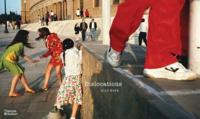Publisher's Synopsis
Most of the articles that have been written about Cartier-Bresson are critical accounts of his art books and exhibitions. This book aims to make an important contribution to the study of Bresson's oeuvre, in that it attempts to re-establish the dimensions of his photojournalism by assessing his typical reportages and to offer a step toward a comprehensive study of his entire oeuvre. While it offers much anecodotal information about his personal life, it is not a biography. Instead, it attempts to restore his photography to its historical and biographical context.;Since the late 1960s, the museum world and the art market have positioned Henri Cartier-Bresson exclusively as an artist and his work exclusively as "art photography". Those who minimize or deny that his art grew out of photojournalism ignore the evidence of his work as it was originally presented in illustrated magazines, specifically, in more than 500 published magazine reports. One prominent example is John Szarkowski, former director of photography at the Museum of Modern Art in New York, who attempted to divide Cartier-Bresson's work into professional and personal categories, and then discount the professional photojournalism.;Cartier-Bresson did not produce two bodies of work. From the early 1930s to the early 1970s, he photographed major news events, world cultures and portraiture essays, all while on assignment or speculation for the mass-circulation picture magazines. From these reports, he selected the best images for his museum exhibitions and books. This book analyzes his reportages as important in their own right, but also as a way to see his greatest pictures in context. It argues that without the photojournalism, there would have been little photographic art.;Cartier-Bresson's emphasis on the single photograph and the presentation of his work in museum exhibitions and books as individual pictures have categorized him as a single-image photographer. By contrast, his intentions and working method as a photojournalist show clearly in his contact sheets. In fact, his photojournalism beginning in the 1940s reveals how he dealt with situations with fluidity and measured resolve, photographing not just to get the "one single photograph", but to create sequences of images to tell a story.;Cartier-Bresson's life, as the scion of an haute bourgeoisie textile manufacturing family who became active in socialist politics in the 1930s, offers a fascinating parallel to his photography. His desire to witness his times and to communicate what he saw to a mass audience meant that Cartier-Bresson travelled the globe in pursuit of his photographs. His social and political consciousness meant that many of his images fit into the tradition of social realism, a tradition in painting and photography which seeks to expose social and human problems.








